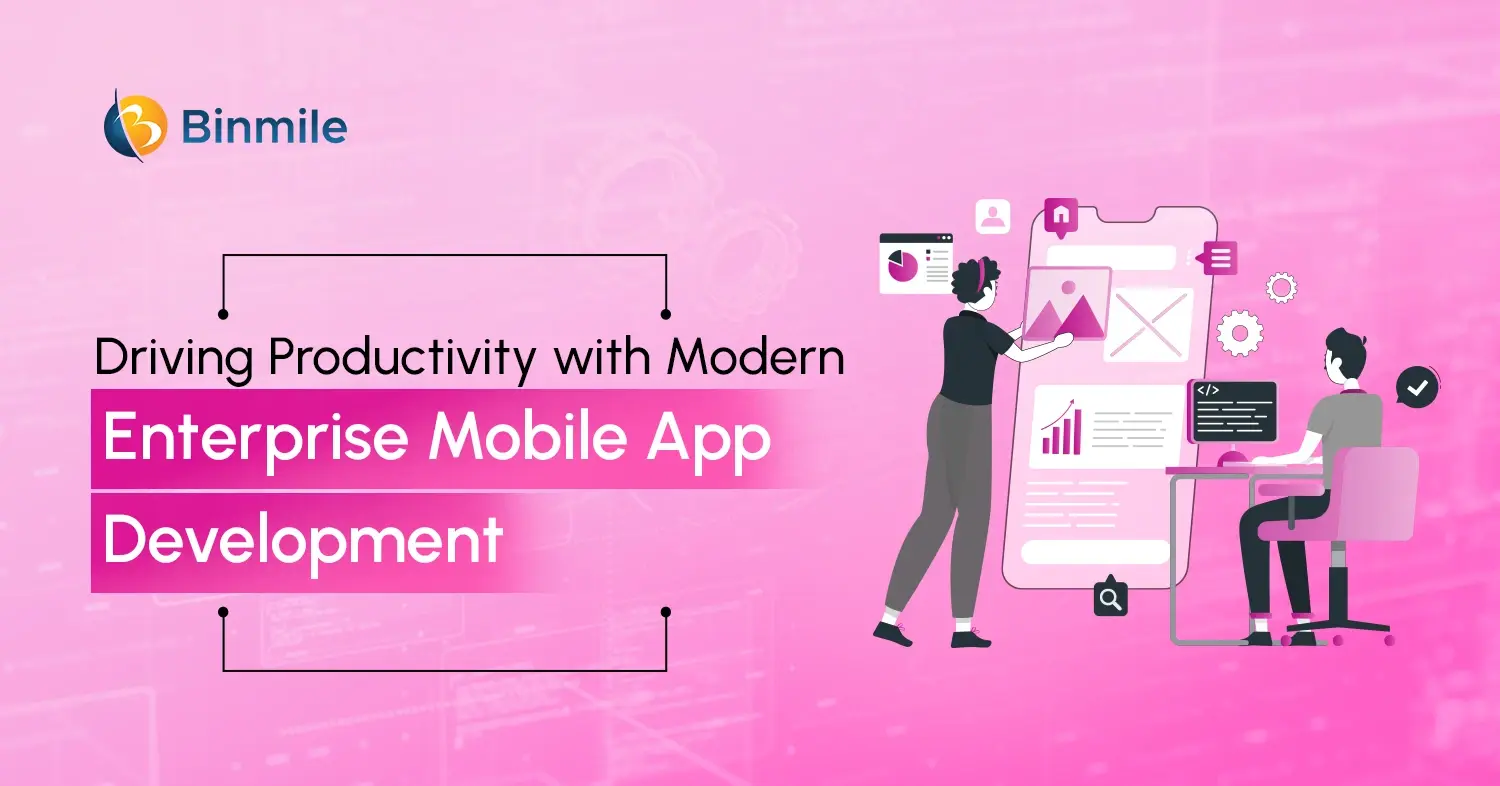As we approach 2025, the domain of mobile app development continues to grow swiftly. Staying ahead of the curve means staying on top of the latest trends that will shape the app development industry and how these innovations can be incorporated to improve user experiences and streamline business operations. We will discuss 10 cutting-edge mobile app development trends in this blog that you must implement in 2025.
11 Best Mobile App Development Trends to Look for in 2025

1. On-Demand App Development
On-demand apps are gaining ground across the globe because they fulfill specific requirements of users exactly when they need them. These applications offer products or services on request, making facilities quickly available for users on the go. Think about applications, such as Uber, DoorDash, Airbnb or CashNow, where people can get cabs, meals, or loans delivered within a few minutes.
Such emerging app trends in 2025 are growing across multiple sectors, ranging from healthcare and beauty services to electronics services and pet care. Take, for instance, healthcare apps now allow users to schedule virtual appointments with medical practitioners or order medicines from a chemist. Similarly, beauty apps connect users with stylists who can reach directly to their doorstep.
With the evolving digital landscape, next-gen on-demand app ideas are also emerging—offering innovative, hyper-personalized services that cater to niche needs. Whether it’s AI-powered mental health support, real-time pet grooming bookings, or instant home repair services, the possibilities are expanding fast.
The demand for such applications is quite high and it is only expected to increase down the line. Studies show that the worth of the on-demand app market will upsurge in the future, taking it to billions by the end of 2025 as more people want swift and easy access to products and services.
2. Personalized AI models
Personalized AI models are one of those software development trends that have been augmenting aggressively for quite some time. These models let apps learn from every user’s behavior, preferences, and visits. This means each user gets a unique experience that feels personalized for them. Just imagine, you open an app, and it already knows what you are searching for based on your previous actions. This is where personalized AI can come in handy. It offers suggestions, provides content, or highlights functionalities that suit every user’s taste. For instance, a music app developed keeping mobile tech trends 2025 in mind might suggest songs based on your recent playlists.
H&M is an example of a brand leveraging personalized AI in its shopping app. The newly designed app displays items similar to those you have previously browsed, making personalized recommendations based on your past interactions. Industries, such as music streaming, retail, and fitness apps are already taking advantage of AI personalization. For developers, this means designing apps that gather data responsibly and process it to enhance the end-user experience.
3. 5G-Powered Apps

The launch of 5G technology has already gained popularity, but 2025 will see even more advanced apps taking advantage of super-fast connectivity. With higher data transfer speeds and minimum delay, software developers will be independent to create optimal-quality yet complicated mobile experiences, like improved VR, AR and 5G apps 2025. In fact, as per an international data and business intelligence platform, the Games segment will achieve the maximum value of 176.1 billion downloads in 2027 owing to richer mobile experiences.
4. Foldable Smartphone Apps
Foldable smartphones are coming back into the picture, and they are transforming how apps are designed. These devices can be turned into larger screens, providing a unique combination of a smartphone and a tablet. By leveraging a large screen space, foldable phones let users multitask, see content in bigger formats, and get an optimum app experience.
For developers, working on these top app trends in 2025 means tailoring apps to work smoothly across various screen modes. When the device is folded, the application needs to work like it would on a common phone screen. But when it is unfolded, the application should make the most of the bigger screen space, rendering users an enhanced viewing experience.
Many famous applications are already embracing foldable technology for mobile apps. Take, for instance, social media apps. They let users see various windows at once, while gaming apps provide more immersive experiences. Even productivity apps are not left behind as they benefit from foldable screens, making users open a document and attend a video call simultaneously.
5. Blockchain-Powered Security Solutions
With data security becoming a major concern, Blockchain will crop up as a significant solution for strengthening the safety of mobile apps, as per a top Android app development company. The decentralized nature of Blockchain makes sure of secure transactions and prevents data manipulation, making it the best choice for finance, healthcare, and eCommerce applications.
6. IoT Expansion
The incorporation of IoT with mobile apps will see unexpected growth. Smart home app using IoT, connected vehicles, and wearable technology will count on advanced mobile applications to control and monitor devices. IoT-powered apps will become imperative for handling everything, ranging from home automation to complicated industrial systems.
7. Extended Reality

XR stands for Extended Reality, which brings together Augmented Reality (AR), Virtual Reality (VR), and Mixed Reality (MR) to design immersive experiences in mobile applications. XR helps users interact with virtual objects in the real world or explore digital environments, opening up infinite possibilities for applications developed for different industries, such as:
- Gaming
- Education
- Real Estate
Imagine browsing through a mobile application to visualize an LED TV in your living room before purchasing it. Or envision a fitness app that guides you through workouts with a visual trainer within your home. Mobile development innovations, like XR, can make these experiences feasible, creating engaging and unforgettable interactions for users.
Curious how we built a SuperApp for Adani? Peruse our case study to know how we integrated multiple services into one platform, delivering sheer convenience.

8. Super Apps
The concept of super apps is growing aggressively all across Asia. By the end of 2025, you will see a large number of single apps providing various services under one platform, like shopping, banking, messaging, and food delivery. These mobile tech trends 2025 help simplify user experiences and streamline overall app management.
Read more about Super Apps in GoodFirms’ survey on 5 App Development Trends for 2025.
9. Metaverse Apps
Developing metaverse app is one of the most thrilling mobile app development trends to eye on in 2025. The concept includes Augmented Reality, Virtual Reality, immersive 3D spaces, and the rest of the digital experiences. As the Metaverse evolves, mobile apps need to incorporate with the digital environment, ultimately, translating into the development of new types of mobile apps that can work with social platforms, virtual marketplaces, and digital event spaces. Thus, it will revolutionize how users interact with applications, making them visually enticing and dynamic. And this is the reason a global data and business intelligence platform has predicted that the Games segment will achieve the highest revenue of 249.9 billion U.S. dollars between 2019 and 2027.
10. Enhanced Mobile Payments

Mobile payment solutions are advancing, and by 2025, developers will incorporate even more fast, frictionless, and secure payment options in their applications. The usage of cryptocurrencies and digital wallets will ramp up, offering users diverse payment methods that are secure and convenient at the same time.
11. Focus on Sustainability
As environment awareness augments, 2025 will see an increased focus on eco-friendly app development practices. App developers will tap tools and technologies that reduce energy consumption and prioritize green hosting services. Apps based on cutting-edge mobile development innovations will encourage sustainable practices, like tracking users’ carbon footprints and fostering eco-friendly actions.
Don’t want your app to fall behind in 2025? Partner with us to turn the latest mobile trends into powerful features that engage your users and drive growth.

The Takeaway
The mobile app development industry is set to reach the next level by 2025, with top app trends 2025 focused on improving user experiences, security, and accessibility. Organizations that adopt these innovations will not just live up to the expectations of users but also have a leg up on the competition. For mobile app developers and businesses, being ahead in mobile app development means implementing these trends to offer what users want and need down the line. If you also want to build a state-of-the-art app for your business exploiting the latest app development trends, it is recommended to consult a digital transformation company that has been operating in the market for decades.
Frequently Asked Questions
On-demand apps provide users immediate access to services or products when needed, transforming sectors like transportation, food delivery, and healthcare. These apps offer real-time solutions that enhance user convenience and satisfaction.
- Examples: Uber, DoorDash, healthcare apps.
- Growing demand across industries like beauty and pet care.
- Market expected to reach billions by 2025, with more people seeking fast access to services.
Personalized AI tailors the app experience by learning from users’ past behaviors and preferences.
Benefits:
- Provides customized recommendations.
- Enhances content and feature suggestions.
- Key sectors: retail, music streaming, and fitness.
- This personalization makes apps more engaging and user-friendly, ultimately improving customer retention and satisfaction.
By 2025, 5G will revolutionize mobile app performance with faster data transfer and lower latency, making apps more interactive and seamless.
Key Effects:
- Supports VR, AR, and advanced gaming apps.
- Enables real-time, complex app features.
- Higher-quality app experiences for users globally.
- The rapid connectivity will empower developers to create richer, more immersive app experiences.
Foldable smartphone apps are designed to work with devices that have flexible screens. When folded, the app functions like a typical smartphone app, but when unfolded, it adapts to the larger screen size, offering an enhanced experience. This innovation will impact app design by requiring developers to ensure that apps are optimized for both small and large screen sizes, allowing for better multitasking and more immersive interactions.









